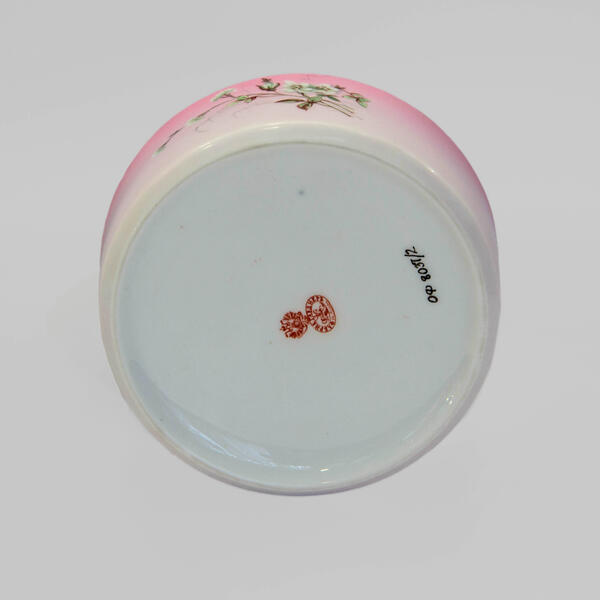The displayed slop bowl is a round vessel with low sides decorated in the technique of overglaze enameling. It is white with a pink gradient. The painting features flowers and twigs. The slop bowl has been known in Europe since the 17th century, usually it was part of a tea set. The displayed item was made at the Gardner factory in the 1880s–1890s. The Gardner Factory has a long and rich history. The enterprise was established in 1766 in the small village of Verbilki, located in the Dmitrovsky district of the Moscow Governorate. The founder of the factory was Francis (Yakovlevich) Gardner, who handed it over to his son in the late 18th century. For 126 years, the enterprise was run by descendants of the founder. In 1892, his heirs sold the factory to the industrialist Matvey Kuznetsov, which marked the end of the Gardner and the beginning of the Kuznetsov period.
For various reasons, the company was not in the best condition when it was sold. Having at his disposal not only the factory, but also its rich legacy, the industrialist Kuznetsov revived production. He had his own porcelain and faience production plants and knew a lot about porcelain. He managed to increase the factory’s output. At the same time, Gardner’s branding was still used, which allowed it to retain customers. When Kuznetsov was in charge of the company, it continued to release porcelain products based on the models and shapes that had been developed at the factory over its entire history.
Many Russian porcelain manufactories failed to survive the revolutionary period of the early 20th century. However, the Gardner Factory managed to get through those difficult times. After nationalization, it was renamed the Dmitrov Porcelain Factory. In Soviet times, it still sometimes used previous models, but also produced the then-in-demand porcelain of average quality. The Soviet period of the factory ended in 1991, when it was bought out by its workers. From that moment on, the plant has been known as “Verbilki Porcelain”.
Having started his company by manufacturing a limited number of experimental porcelain products, Francis Gardner, by the time of his death in 1796, turned the factory into the best private enterprise in Russia, specializing in porcelain. The monument to Francis Gardner currently is located in the park of culture and recreation in the village of Verbilki.



